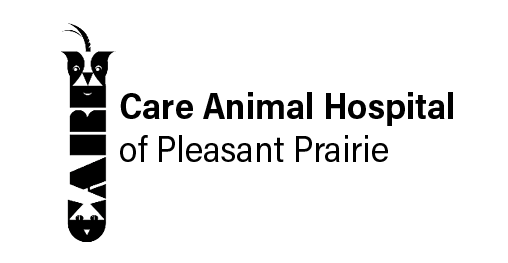Library
-
TTouch is a form of touch therapy devised and popularized in 1978 by Linda Tellington Jones, an equestrian with a long-standing interest in massage, training, and physical therapy techniques. TTouch is a simple, light massage technique in which the practitioner uses a clockwise circular motion of the fingers on the skin of the patient.
-
Tularemia is an infection of the bacteria Francisella tularensis and is most common in rabbits and rodents. Infection in dogs occurs from ingestion of an infected animal, drinking contaminated water, or getting bitten by a blood-sucking insect. Tularemia causes mild illness in healthy dogs. More severe clinical signs include enlarged lymph nodes and draining abscesses. Treatment includes antibiotics, surgical removal of any draining abscesses, and any other supportive care warranted by the dog's condition. Tularemia is a reportable zoonotic disease.
-
Tylosin is an antibiotic given by mouth or by injection in small mammals and is used off label to treat diarrhea and inflammatory bowel disease. Common side effects include decreased appetite and diarrhea. Do not use in pets that are allergic to it. If a negative reaction occurs, call your veterinary office.
-
Damage to the tympanic membrane and middle ear infections can be very painful for dogs and cause a variety of clinical signs affecting the skin and nervous system. Diagnosis often requires a thorough ear examination with testing while your dog is under sedation or anesthesia. The treatment methods and prognosis depend on the nature of your dog's condition.
-
Ultra-micronized palmitoylethanolamide (PEA-um), brand name Redonyl Ultra, is a nutraceutical used to support skin health in dogs and cats. PEA-um comes in oral chewable and powder forms. It is used "off label" or "extra label".
-
Ultrasound uses the reflection of sound waves to generate an image of internal structures allowing for identification of masses, pregnancy diagnosis, abnormal heart function and muscle size, abnormalities of the orbit, and abnormal appearance of abdominal organs. Ultrasound results can be analyzed in real time; however, assessment by a radiologist may take several days. Ultrasound is an invaluable tool to detect problems in a non-invasive fashion.
-
An umbilical hernia is a protrusion of the abdominal lining, abdominal fat, or a portion of abdominal organ(s) through the area around the umbilicus. An umbilical hernia can vary in size from less than a ¼” (1cm) to more than 1” (2.5cm) in diameter. Small (less than ¼” or 1cm) hernias may close spontaneously (without treatment) by age 3 to 4 months. If the hernia has not closed by the time of spaying or neutering, surgical repair of the hernia is recommended and prognosis is excellent.
-
Controlled substances are medications or illicit drugs that affect the central nervous system and have the potential for abuse or dependence, both in humans and in animals. These drugs are often needed to manage pain and other conditions in pets and are relatively safe when used appropriately and under the guidance of a veterinarian. Be sure you understand the risks and responsibilities associated with controlled substance use.
-
The anconeal process is a small projection of bone on the ulna, the longer of the two bones of the forearm. If the anconeal process does not fuse to the rest of the ulna correctly during growth, it causes a condition called ununited anconeal process (UAP). This problem appears to be hereditary mostly in large breeds. When this part of the ulna does not fuse, the elbow joint becomes unstable, causing lameness and pain. Treatment requires surgery. Some form of rehabilitation will improve your dog's chances of making a full recovery from surgery and minimize lameness problems.
-
Urate bladder stones are most commonly the result of a genetic abnormality in breeds such as dalmatians. Other causes include liver diseases such as portosystemic shunts. The most common signs that a dog has bladder stones are difficulty urinating and blood in the urine. Strategies for treating urate bladder stones in dogs include medical dissolution and removal. Dogs that have experienced urate bladder stones will often be fed a therapeutic diet for life. Dogs with liver disease will need to be treated appropriately prior to addressing urate bladder stone management.


